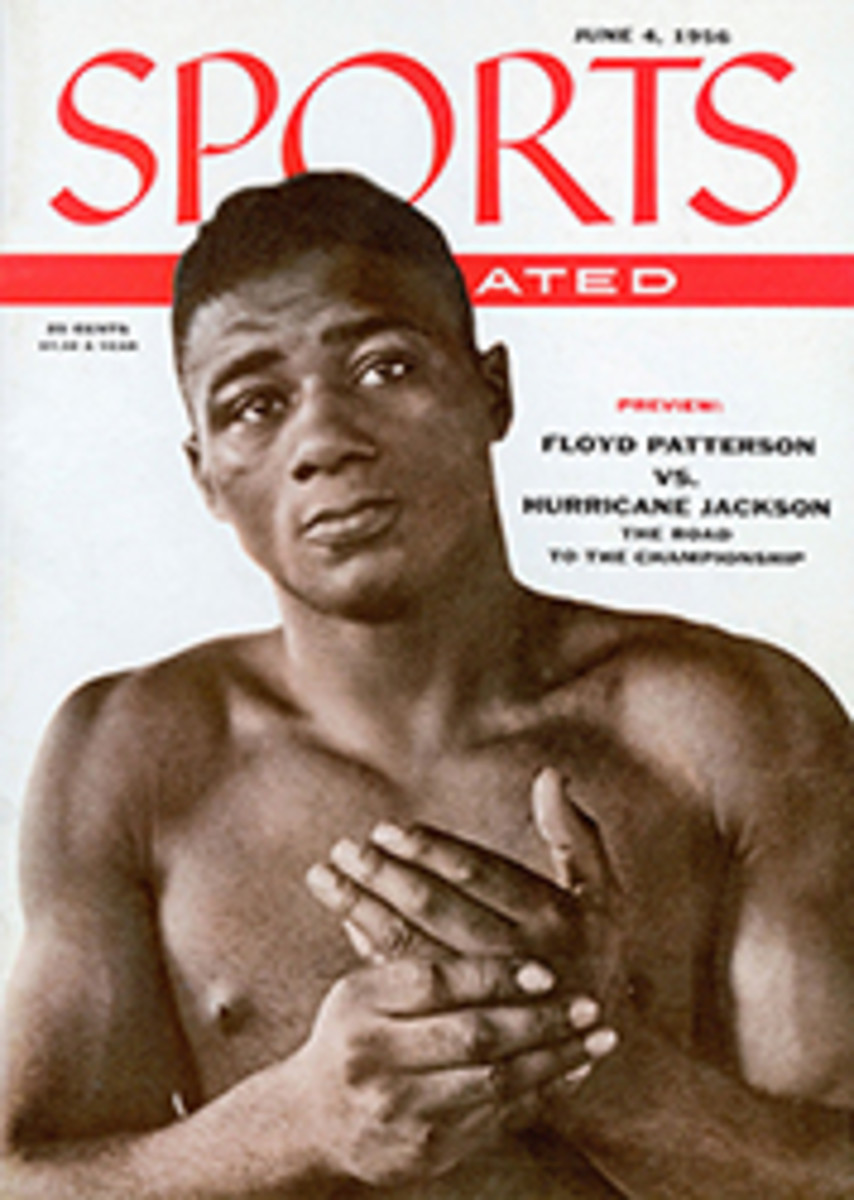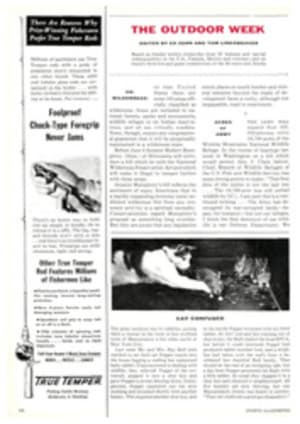
DEEP-DISH OUTBOARD
The most popular boat in the U.S. today is the 14-foot outboard runabout. There are a million of these craft in the country, and their popularity is easy to understand. They are inexpensive and convenient to trail behind a car, yet large enough for family picnics, fishing trips, water skiing or just plain getting out on the water. These are the standard virtues. If, in addition, a particular runabout happens to be safe, simple to maintain and capable of taking the big new engines, that boat comes close to perfection for the average American outboarder.
One runabout that fulfills all these requirements is the Beetle Boat Company's fiber-glass Baitcaster (see cut). I saw the pilot model under construction last fall at Beetle's New Bedford, Mass. plant. In that early stage she looked more like a tapered shipping crate than a popularity contest winner, and Ben Clark, president of Beetle, sounded apologetic as he explained her humble birth.
The company had then—and still has—a fine-lined 15½-footer that gives a sound performance in a sea. Her only fault was that she didn't sell—not in sufficient quantity, anyway, to keep Beetle's big plant busy.
"Most of my dealers told me," said Clark, "that customers complained about her being too narrow, too low and too tippy. And they said that her fiber-glass deck was not as attractive as mahogany. I know she's a good design, but I'm tired of trying to educate the buyer. So I decided to give them what they wanted."
In giving the customers what they asked for, Beetle did not give up on its basic fiber-glass construction. In the matter of design, however, the company did a complete about-face. The result was Baitcaster—13 feet 7 inches long, 35 inches deep and a full 6 feet 2 inches in the beam.
Her seats are mahogany. So is her forward deck, thwart and trim. The gunwale is oak inside and mahogany outside. When varnished, these wooden parts dress her up, but pose only a minor maintenance problem. There is, of course, virtually no maintenance on the hull itself, since fiber-glass neither shrinks, swells nor rots, and requires little or no paint. A Plexiglas wraparound windshield, besides being practical, adds to her style.
When Baitcaster made her public debut at the New York Boat Show last winter, she didn't exactly take the place by storm. Admittedly she looked better than I dreamed possible from the pilot model, but still she was no beauty. A number of discerning dealers, however, placed small orders, and when their customers tried her in the water they liked her. It was evident from her quick popularity that Beetle, in trying to produce a popular boat, had hit upon a truly fine design.
The reports were so favorable that I felt I ought to test her myself. When I saw her in the water, sitting at her moorings, she looked far more trim than she had on the showroom floor. And when she was brought alongside the dock, she seemed roomier than the average 15-footer. Three adults could sit on her forward seat. Beneath this seat were two watertight storage lockers. The center of the seat could be flipped down to provide a walk-through to the after section of the boat.
Behind the seat were two large, folding aluminum chairs, with plenty of space to walk between them. Aft of the chairs, on either quarter, were two watertight compartments, each large enough to contain either a standard remote fuel tank or an electric starting battery (see drawing). Beneath the floorboards there was room for enough Styrofoam to float 180 pounds of dead weight in case of swamping. Next fall Styrofoam will be standard equipment; but until then any outboarder who takes the boat into deep water without it is asking for trouble.
HARDLY A QUIVER
In getting aboard, I stepped squarely on the gunwale, yet the boat hardly quivered. Walking forward and aft and then from side to side produced only an imperceptible change in trim and list. Beetle's 225-pound assistant sales manager, Oz Baxter, joined me on the gunwale, and although our combined weight totaled 405 pounds, Baitcaster still showed several inches of freeboard.
We then settled into the front seat, started the engine and cast off. One advantage of Baitcaster's hull design immediately became apparent. In an ordinary runabout, our 33-hp Scott-Atwater engine, even if held to idling speed, would have pushed the boat too fast for trolling. But Baitcaster's broad, flat stern dragged in the water, holding her speed low enough to satisfy even a striped-bass fisherman. We gave her more throttle. At half speed she planed nicely, and at full throttle she skimmed along quite fast—about 25 mph—for a 490-pound boat carrying 405 pounds of passengers.
Still at full speed we turned into the waves kicked up by the 10-knot wind. Baitcaster remained perfectly dry but pounded heavily. Any small boat driven fast into a sea will give a rough ride, but Baitcaster's flat broad sections made her pound beyond the point of reasonable comfort. At half speed, however, her motion was slow and easy.
She turned beautifully, banking smoothly, with no tendency to trip. Her broad beam did not cause the prop to come out and race on sharp turns.
We tried backing, and she steered perfectly. When we backed straight into the choppy sea, however, heavy spray slopped aboard through the cut-down transom. A full-height transom, for use with a long-shafted motor, is available at no extra cost. In all but the most protected waters this modification is strongly recommended, since it corrects the only flaw in Baitcaster's otherwise seaworthy design.
We put her to one last test by coming into the dock cross wind. Like any small runabout, she could have been expected to make leeway; but due to her above-average weight, she showed little tendency to slide downwind.
When we finally had her secured to the dock, after an hour of tests, I was sold on her. She costs $695 complete. A navy top with higher windshield is available for an extra $87, and side curtains cost $22. For those who want to pay less and do some of the work themselves, Beetle provides a bare hull—no seats, no trim, etc.—for $357. At either price, Baitcaster is a lot of boat for the money, arid the outboarding public that demanded her deserves a pat on the back for laying down the specifications for one of the safest, solidest and most versatile runabouts on the market today.
PHOTO
UNDER FULL POWER, BAITCASTER LIFTS HER BOW AND PLANES LIGHTLY AT 25 MPH
ILLUSTRATION
LATEST RIGGING FOR A RUNABOUT
Big engines and remote controls give top price performance on low-priced outboards
Starter
Choke
Steering lines lead to wheelpost
Glove compartment on each side of dash
Clutch control
Throttle
Cable for remote choke and starter
Seat folds down to provide walk-through
Storage lockers
Folding chair
Cable to remote, throttle control
Cable to remote clutch control
Gas tank and connecting hose
Steering lines
Hose for automatic bailer
Automatic bilge pump attachment
Battery for remote starter
Steering lines
Electric starting connection

